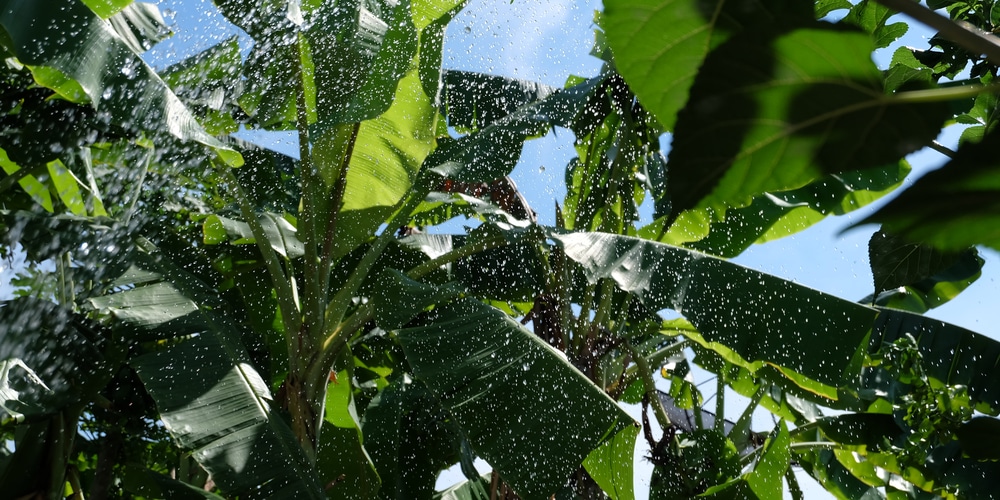Homegrown produce always tastes better, but is it possible to grow the tropical banana tree in Arizona? Keep reading to learn more about growing banana trees in Arizona.
Can You Grow a Banana Tree in Arizona?

It is possible to grow banana trees in parts of Arizona. Even though bananas grow in tropical environments, they survive in Arizona due to its hot climate. With proper care, banana trees planted in Arizona can last for years.
Challenges to Growing Banana Trees in Arizona
While banana trees can survive in Arizona, it requires hard work. You run into challenges when you grow something outside of its native habitat.
Winter
While Arizona is a warmer state, its winters are cold enough to threaten the longevity of a banana tree. Typically bananas thrive in tropical areas that don’t experience four seasons.
Wind
Banana trees are sensitive to heavy wind. The leaves on this tree are thin and fragile; a strong gust of wind could shred the leaves, causing the plant to fall over. Gardeners should plant banana trees against a barrier like a house or sturdy fence.
Rot
Banana plants need large amounts of water for survival, but they also rot easily. Root rot is less of an issue in the summer because of the warm weather. However, banana trees barely need watering in wet months like winter.
Tips for Growing Bananas in Arizona
Growing tropical plants in other environments are tricky for several reasons, but some preventative measures produce a delicious bunch of bananas. Here are four crucial tips to ensure your banana tree lasts.
Soil Conditions
One of the benefits of banana trees is that they grow faster than other fruit varieties, reaching their full height in just nine months because it relies on nutrient-rich soil for food. Make sure to plant your banana tree with quality soil, like compost or manure.
Drainage
Banana trees need soil with optimal drainage conditions to avoid problems such as root rot which are associated with overwatering. Sandy soil is one of the best options for drainage. Luckily for Arizona gardeners, this area has an abundance of sandy soil to use in tandem with nutritious compost.
Salt Buildup
Compared to other parts of the United States, Arizona gets little rainfall. This is an issue for banana trees because of the layers of salt that build up on the soil.
Occasionally soaking the ground around the banana tree helps prevent salt buildup and keeps the plant healthy.
Sunshine
As a tropical plant, banana trees love sunlight. However, too much sun in the sapling’s infancy could kill the plant. Exposing banana trees to the sun all day burns and rots the leaves.
If no place on your lawn gets adequate shade, try using a shade cloth to protect your tree from the Arizona sunshine.
Best Banana Tree Varieties for Arizona
When you picture a banana, an image of the Cavendish variety likely comes to mind. This is the type of banana sold in grocery stores, but thousands of other varieties are available to plant. Five varieties to plant in Arizona include:
- Manzano: Tolerates cold better than other varieties but needs support to keep from falling over. Many people say the Manzano banana tastes similar to an apple.
- Must Dwarf Green: Begins producing fruit at only six feet tall and looks lovely on lawns with its luscious and thick leaves.
- Dwarf Red: Although this takes more effort to grow in Arizona, it produces striking red leaves and bananas with a red peel.
- Goldfinger: These are most similar to the Cavendish variety. The tree reaches about 14 feet tall at full maturity, and its thick trunk makes it more wind resistant.
- Blue Java: The fruit’s outer peel starts blue rather than green, then transforms to the classic yellow color. Many people report this banana tastes similar to vanilla ice cream.
Conclusion
While you can grow your own bananas in Arizona, it takes a lot of effort. You must also pick a banana variety compatible with the Arizona climate and ensure the tree has the right growing conditions.
